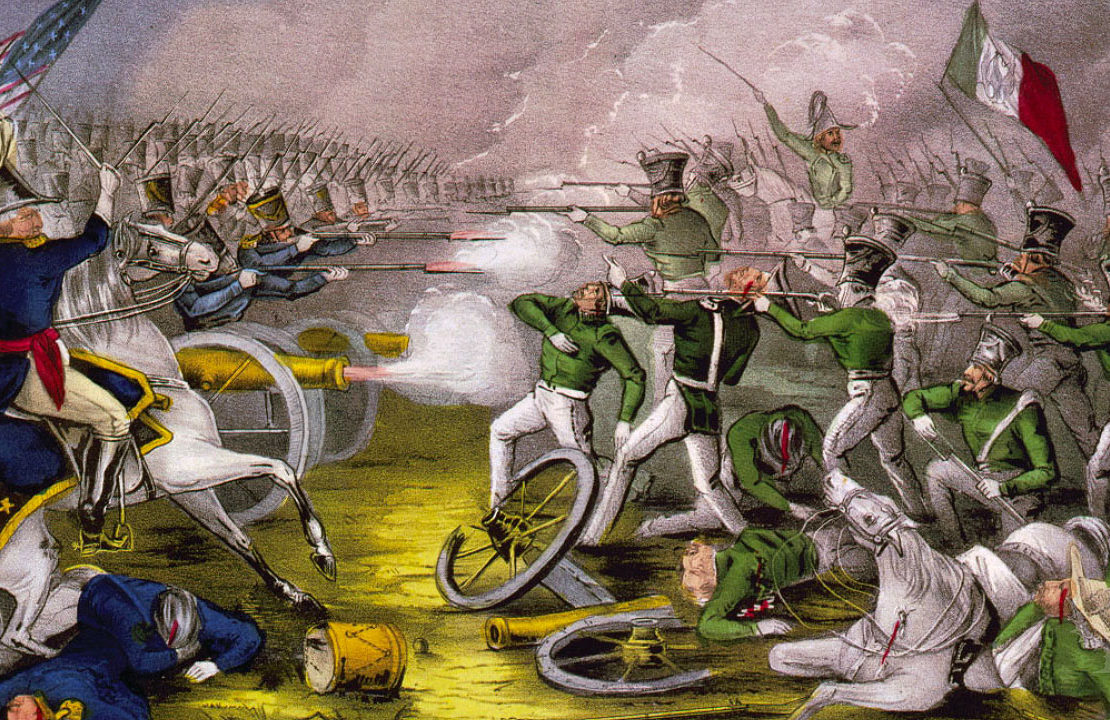Still smarting from the loss of Texas a decade before, Mexico went to war with the United States in 1846 after a series of skirmishes on the border. The Americans invaded Mexico on two fronts and captured Mexico City in May of 1848.
As devastating as the war was for Mexico, the peace was worse. The Treaty of Guadalupe Hidalgo ceded California, Nevada, Utah, and parts of Colorado, Arizona, New Mexico, and Wyoming to the United States in exchange for $15 million and forgiveness of about $3 million more in debts.
The Western War
American President James K. Polk intended to invade and hold the territories he wanted, so he sent General Stephen Kearny west from Fort Leavenworth with 1,700 men to invade and hold New Mexico and California. Kearny captured Santa Fe and then divided his forces, sending a large contingent south under Alexander Doniphan. Doniphan would eventually take the city of Chihuahua.
Meanwhile, the war had already begun in California. Captain John C. Frémont had been in the region with 60 men: they organized American settlers in California to revolt against the Mexican authorities there. He had the support of some US navy vessels in the area. The struggle between these men and the Mexicans went back and forth for a few months until Kearny arrived with what was left of his army. Although he was down to fewer than 200 men, Kearny made the difference: by January of 1847 the Mexican northwest was in American hands.
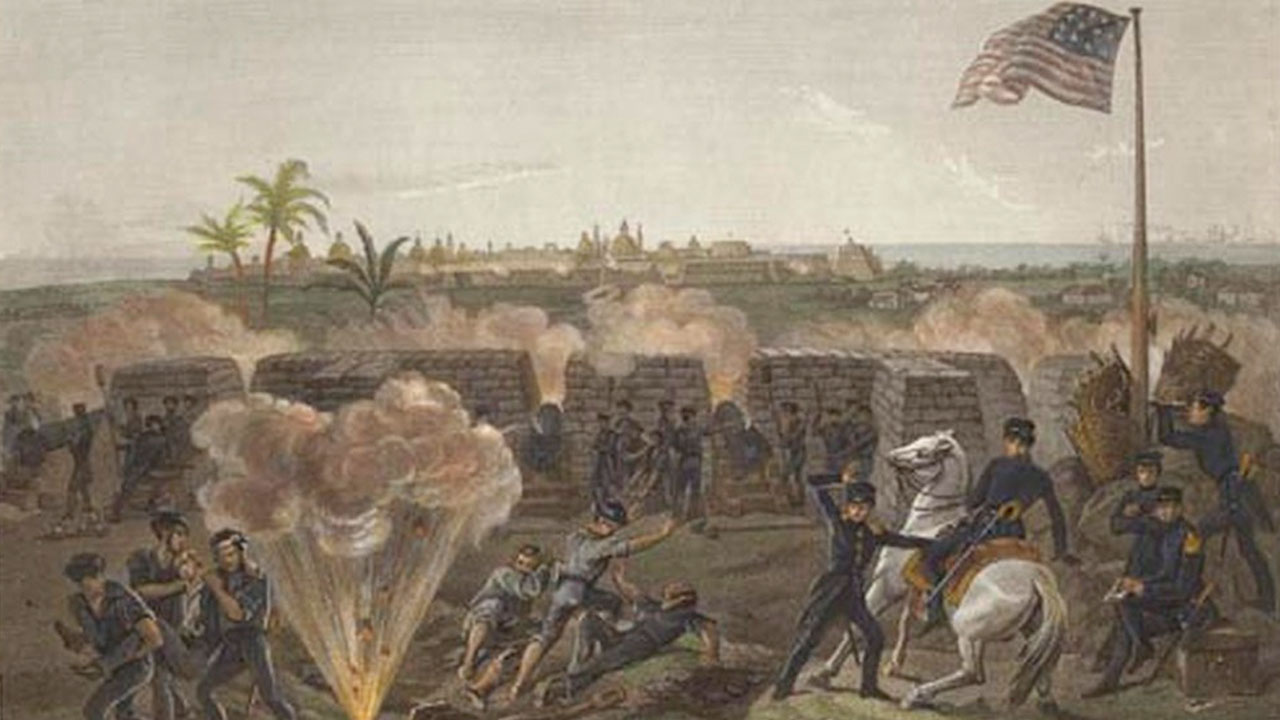
General Taylor’s Invasion
American General Zachary Taylor was already in Texas with his army waiting for hostilities to break out. There was already a large Mexican army on the border as well: Taylor routed it twice in early May of 1846 at the Battle of Palo Alto and the Battle of Resaca de la Palma. During both battles, superior American artillery units proved the difference.
The losses forced the Mexicans to retreat to Monterrey: Taylor followed and took the city in September of 1846. Taylor moved to the south and was engaged by a massive Mexican army under the command of General Santa Anna at the Battle of Buena Vista on February 23, 1847: Taylor once again prevailed.
The Americans hoped that they had proved their point: Taylor’s invasion had gone well and California was already securely under control. They sent envoys to Mexico in the hopes of ending the war and gaining the land they desired: Mexico would have none of it. Polk and his advisors decided to send yet another army into Mexico and General Winfield Scott was selected to lead it.
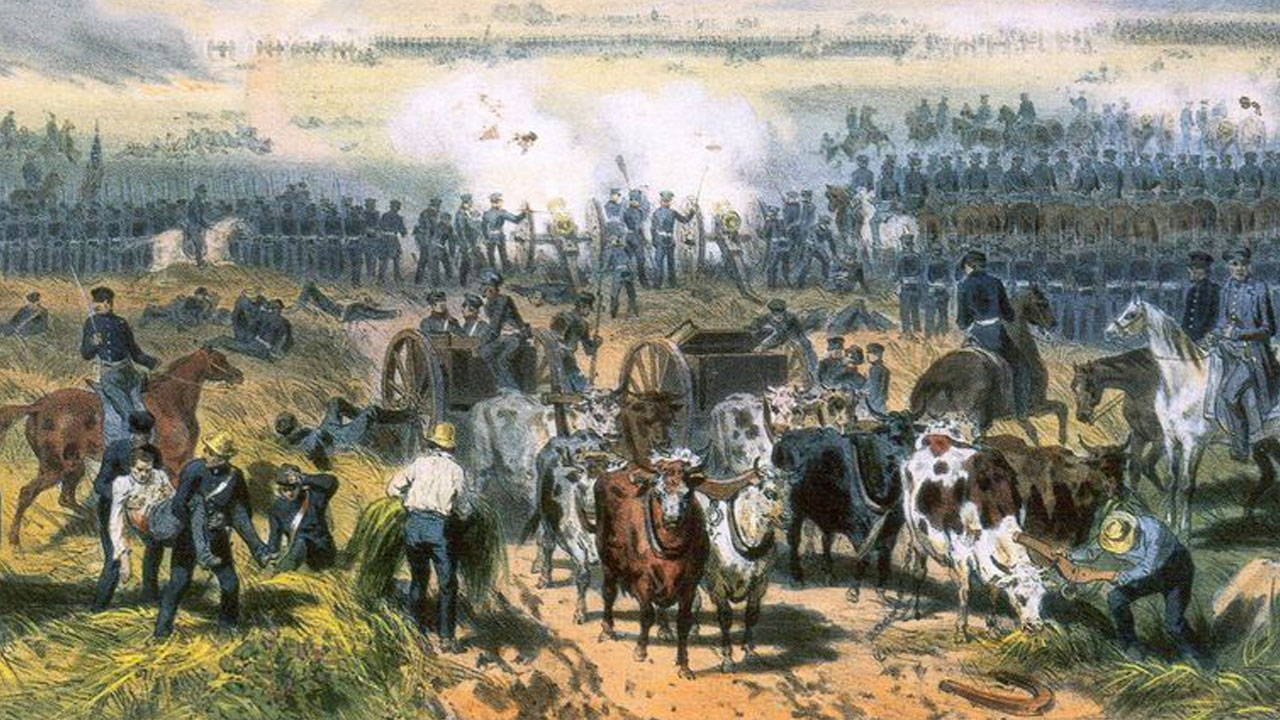
General Scott’s Invasion
The best route to get to Mexico City was to go through the Atlantic port of Veracruz. In March of 1847, Scott began landing his troops near Veracruz. After a short siege, the city surrendered. Scott marched inland, defeating Santa Anna at the Battle of Cerro Gordo on April 17-18 along the way. By August Scott was at the gates of Mexico City itself. He defeated the Mexicans at the Battles of Contreras and Churubusco on August 20, gaining a toehold into the city. The two sides agreed to a brief armistice, during which time Scott hoped the Mexicans would finally negotiate, but Mexico still refused to sign away its territories to the north.
In September of 1847, Scott attacked once again, crushing the Mexican fortification at Molino del Rey before assaulting the Chapultepec Fortress, which was also the Mexican Military Academy. Chapultepec guarded the entrance to the city: once it fell the Americans were able to take and hold Mexico City. General Santa Anna, seeing that the city had fallen, retreated with what troops he had left to unsuccessfully try and cut the American supply lines near Puebla. The major combat phase of the war had ended.
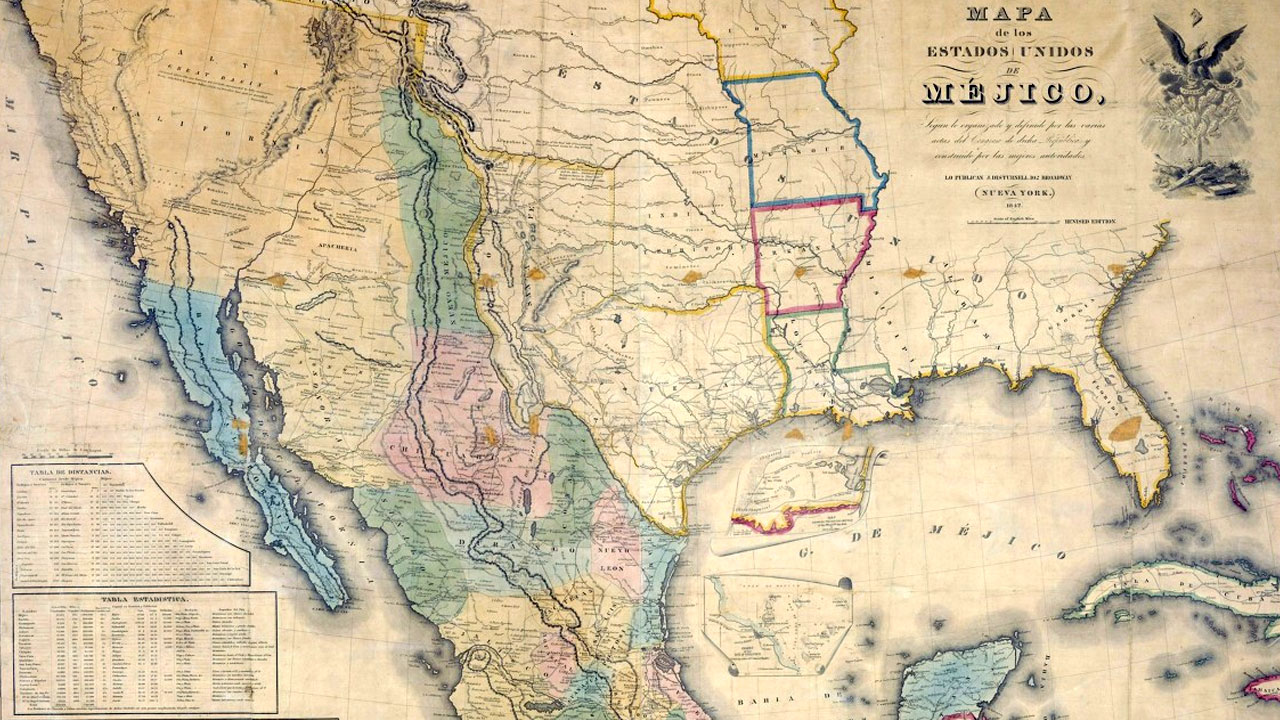
The Treaty of Guadalupe Hidalgo
The Mexican politicians and diplomats were finally forced to negotiate in earnest. For the next few months, they met with American diplomat Nicholas Trist, who had been ordered by Polk to secure all of the Mexican northwest in any peace settlement.
In February of 1848, the two sides agreed on the Treaty of Guadalupe Hidalgo. Mexico was forced to sign over all of California, Utah, and Nevada as well as parts of New Mexico, Arizona, Wyoming and Colorado in exchange for $15 million dollars and exoneration of about $3 million more in previous liability. The Rio Grande was established as the border of Texas. People living in these territories, including several tribes of Native Americans, reserved their properties and rights and were to be given US citizenship after a year. Lastly, future disagreements between the US and Mexico would be settled by mediation, not warfare.
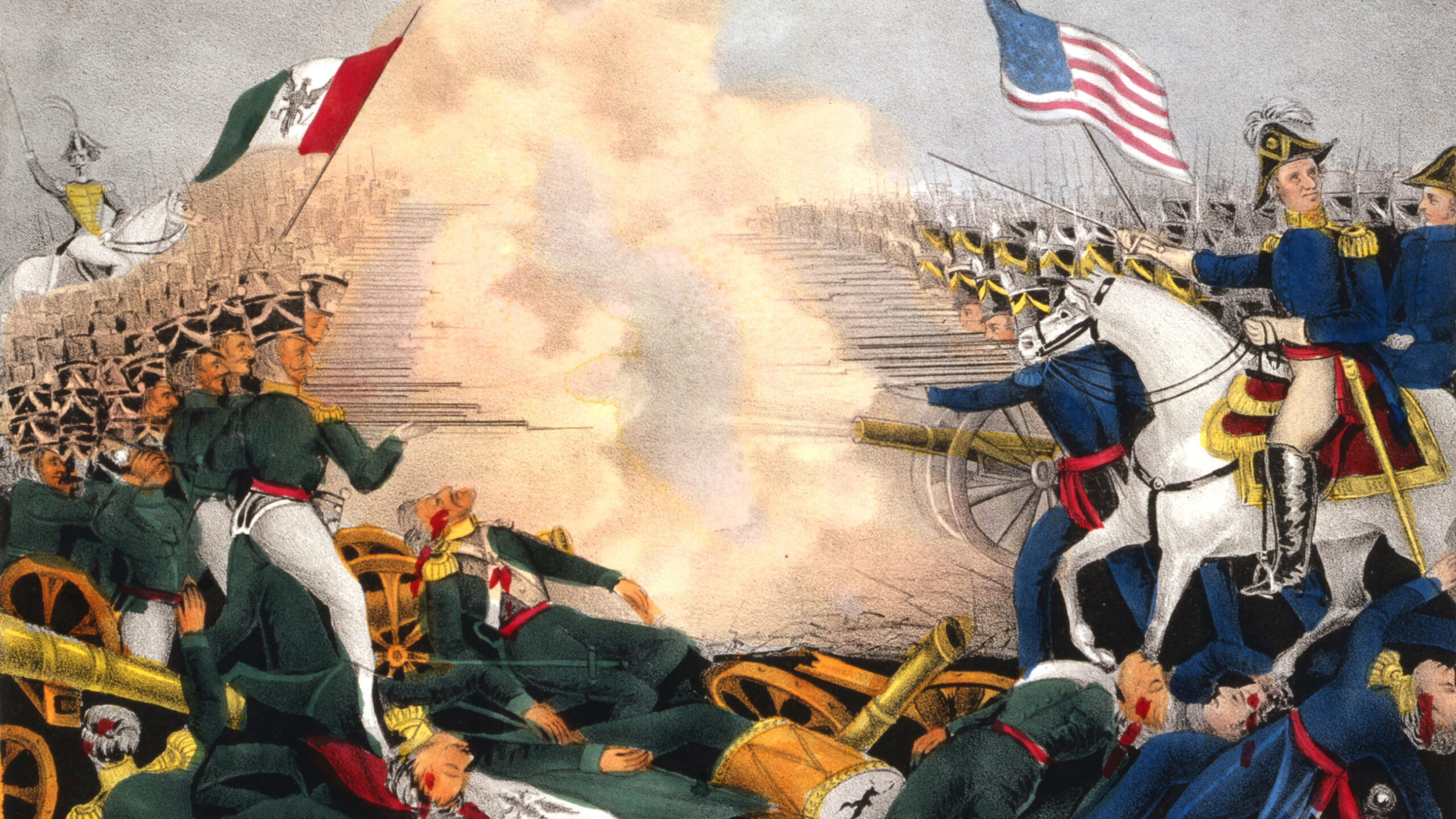
Legacy of the Mexican-American War
Although it is often overlooked in comparison with the American Civil War, which broke out about 12 years later, the Mexican-American War was just as important to American History. The massive territories gained during the war make up a large percentage of present-day United States. As an added bonus, gold was discovered shortly thereafter in California which made the newly acquired lands even more valuable.
The Mexican-American War was in many ways a precursor to the Civil War. Most of the important Civil War Generals fought in the Mexican-American War, including Robert E. Lee, Ulysses S. Grant, William Tecumseh Sherman, George Meade, George McClellan, Stonewall Jackson and many others. The tension between the slave states of the southern USA and the free states of the north was made worse by the addition of so much new territory: this hastened the onset of the Civil War.
The Mexican-American War made the reputations of future US Presidents. Ulysses S. Grant, Zachary Taylor, and Franklin Pierce all fought in the war, and James Buchanan was Polk’s Secretary of State during the war. A Congressman named Abraham Lincoln made a name for himself in Washington by vocally opposing the war. Jefferson Davis, who would become President of the Confederate States of America, also distinguished himself during the war.
If the war was a bonanza for the United States of America, it was a disaster for Mexico. If Texas is included, Mexico lost more than half of its national territory to the USA between 1836 and 1848. After the bloody war, Mexico was in ruins physically, economically, politically and socially. Many peasant groups took advantage of the chaos of war to lead uprisings all over the country: the worst was in Yucatan, where hundreds of thousands of people were killed.
Although Americans have forgotten about the war, for the most part, many Mexicans are still irate about the “theft” of so much land and the humiliation of the Treaty of Guadalupe Hidalgo. Even though there is no realistic chance of Mexico ever reclaiming those lands, many Mexicans feel they still belong to them.
Because of the war, there was much bad blood between the USA and Mexico for decades: relations did not begin to improve until World War Two, when Mexico decided to join the Allies and make common cause with the USA.

